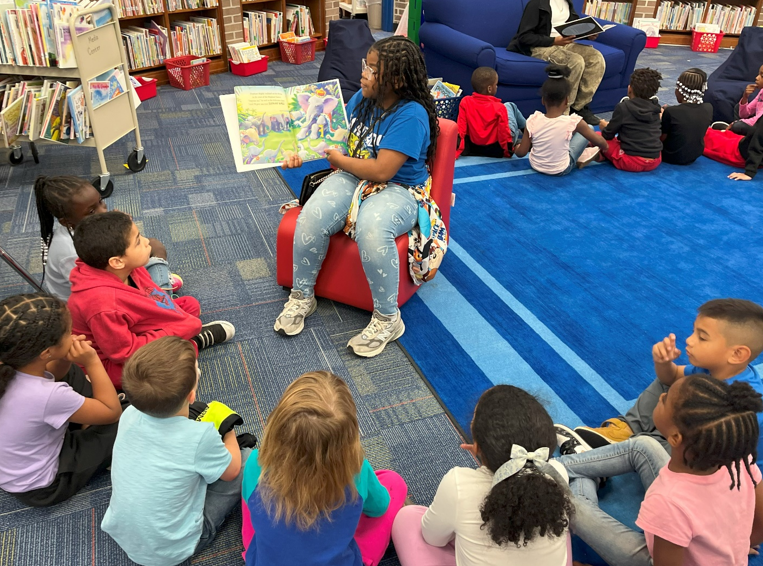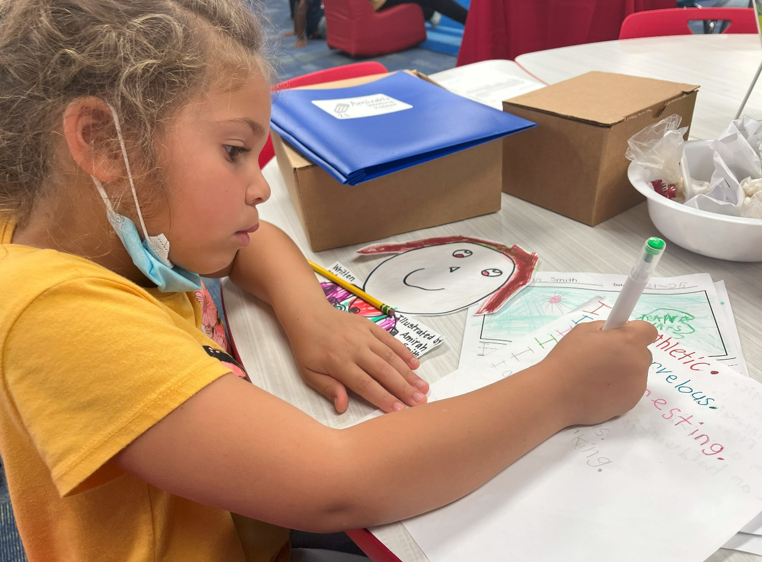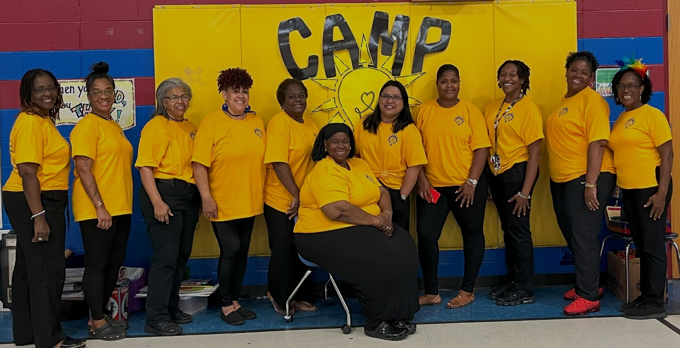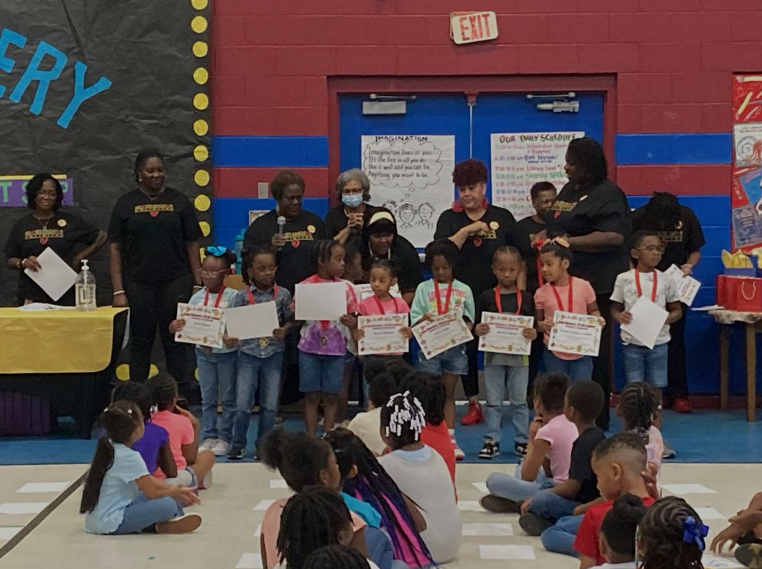School Librarians Collaborating with Students, Parents, Families, and Community Members: A Never-Ending Joyful Journey
Mary Jade Haney
I’m an elementary school librarian, but I’ve worn many hats throughout my journey in education—classroom teacher, visual arts teacher, reading teacher, interventionist, literacy coach, professional developer, curriculum writer, and teacher educator. I bring all of these experiences with me into the library every day. My goal is to weave the real, literate lives of students, families, and community members into the required curriculum in ways that spark joy and make learning meaningful for everyone.
As a school librarian, I believe that collaboration—with students, educators, parents, families, and community members—creates joyful and meaningful learning experiences. By working together, we learn from one another and help to build inclusive, engaging spaces for learning. This partnership is essential in supporting culturally relevant literacy, connecting learning from home to school to the wider community. It’s a continuous journey of growth and shared understanding.
In these photos I provide a snapshot of some of our collaborations in school, at the local library, and during the summer.
The Librarian Cadets are a group of fifth-grade students who promote literacy by organizing library events for early childhood students. They work together to plan and lead activities such as reading stories to younger students, all while honoring the legacy of Augusta Baker—an exceptional storyteller and librarian. This program fosters student leadership and strengthens the school community through collaboration with the school librarian.
As Cadets, students created events like Reading Is Life Storytime, where they read to younger students in small groups. They also participated as guest performers during Black History Month, both at school and in the community. This year, the Librarian Cadets made a significant impact on the library’s programming.
The Young Writers Workshop has extended beyond the school walls through a collaboration with the public library. In this project, first graders begin by writing an acrostic poem using their names. From the words in their poems, they create affirmations that reflect who they are. After completing their acrostic poem and affirmations, each student chooses one affirmation to turn into a sentence, which they then illustrate. They also create a cover, title page, and dedication page for their personal book.
Once finished, students share their books with family and friends. These affirmations become something they can return to anytime they want to celebrate themselves. By reading their books aloud, they also build confidence and fluency. Our young writers are truly amazing!
We began our journey in 2012 with a group of dedicated certified and classified educators, united by a shared passion for learning. Using our own experiences, creativity, and personal resources, we came together to design a summer learning experience for teachers, students, and parents—rooted in love and community.
Camp Discovery STEAM Academy was created to provide professional development for educators while immersing students in rich literacy experiences, supporting families, and building a strong community of learners. Guided by the African proverb, “It takes a whole village to raise a child,” our camp reflects the power of collective growth.
The camp begins with one week of professional development for educators. For the following two weeks, educators collaborate with students, parents, and community members in hands-on, interdisciplinary learning. The experience culminates in Parent, Family, and Community Day—a celebration that showcases eight days of learning, literacy, and leadership.
Camp Discovery is more than a camp—it’s a space that centers social justice, celebrates diversity, and nurtures the whole child through collaboration and care.
Parent, Family, and Community Day is the grand finale of our learning journey at Camp Discovery STEAM Academy. On this special day, families and community members come together to celebrate students’ growth and achievements. Students lead the way, sharing their work through student-led conferences and presenting projects displayed on the learning exhibition wall.
The day includes catered food, opportunities for families to connect, and a celebration of both students and educators. Students are recognized with certificates, and teachers are honored for their dedication. The joy and pride are evident in every child—it’s a powerful and uplifting experience that reflects the heart of Camp Discovery.
Mary Jade Haney, MLIS, NBCT (Renewed) completed her fifth year of serving as an elementary school librarian informed by multiples roles as an educator. Currently, she is a doctoral candidate (University of South Carolina – Columbia) in the College of Education (Teaching & Learning). She brings a variety of experiences to inform librarianship in an elementary school setting from serving in multiple roles as an educator (i.e., classroom teacher, visual arts teacher, reading teacher, reading interventionist, literacy coach, teacher educator professional developer, and curriculum writer) with a focus on sociocultural theory and culturally relevant pedagogy.
ORCID: 0009-0000-0760-2520
© 2025 Mary Jade Haney
Authors retain copyright over the vignettes published in this journal and grant the journal right of first publication with the work simultaneously licensed under the following Creative Commons License:

WOW Stories, Volume XII, Issue 1 by Worlds of Words is licensed under a Creative Commons Attribution-NonCommercial-ShareAlike 4.0 International License.
Based on work by Mary Jade Haney at https://wowlit.org/on-line-publications/stories/xii-1/7.
WOW stories: connections from the classroom
ISSN 2577-0551




